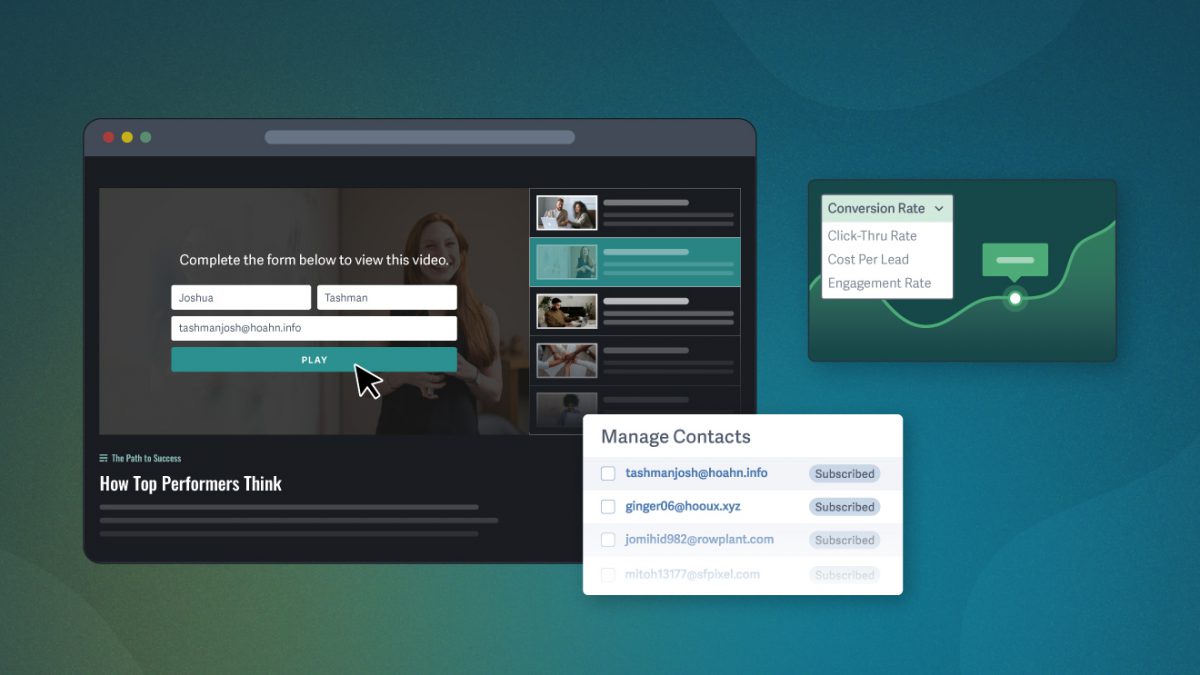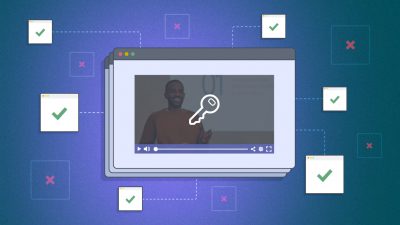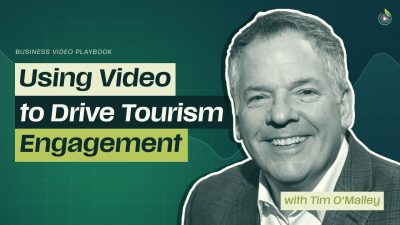Video lead generation is the strategic use of video content to attract, capture, and convert leads into loyal customers. In other words, once you get eyeballs on your video content, how do you persuade viewers to join your audience?
We asked professional marketers and business owners to share their tips with real-world examples. Use their insights to inspire your next video lead generation campaign.
Why Video Lead Generation Matters
With strategic video lead generation, you can increase the number of people who take the step from awareness to lead. On average, for every one hundred people who watch your video, about three will enter your funnel by joining your newsletter, downloading an opt-in resource, starting a free trial, etc.
The benefits of video lead generation include:
- Encourage Brand Interaction: Motivate viewers to engage with your value-added resources, which fosters trust and prompts action.
- Increase Opt-In Conversion: Use video to provide significant value upfront then extend the value with gated next-step solutions, which lowers opt-in hesitation.
- Expedite Path To Purchase: Leads enter the sales funnel with awareness of your brand and the knowledge they need to make decisions, accelerating purchase momentum.
Every business needs a pipeline of leads to generate sales. Video makes it easier to create connections, showcase value, and move prospects into and through your sales funnel.
3 Step Quick-Start Guide to Video Lead Generation
- Test content and channels: Use video analytics and conversion data to determine what video formats and channels are most effective. Social media, advertising, and high-intent landing pages are common top-of-funnel channels.
- Include a call to action: Before, during, or after the video, include a call to action that directs traffic toward a logical next step for the viewer.
- Capture with lead magnets: Extend the value of your video with high-value gated solutions. The best lead magnets are generally free resources that people would otherwise buy, such as audits, templates, mini-courses, etc.
10 Types of Videos That Generate Leads with Real Examples
Make viewers excited to join your audience by understanding their problems and providing solutions that compel them to engage with your brand. With examples from marketers and business owners, here are twelve types of video to amplify your lead generation goals.
Testimonials That Walk In Their Shoes
Generic testimonials build social proof but rarely provide enough value to motivate action. However, in the expert example below, Joubert helped prospects build confidence in their service by sharing the process. Instead of interviewing the client after her experience, this day-in-the-life testimonial brings viewers along for the journey, which helps them build confidence that the product or service will work for them.
- Challenge: Most testimonials build trust but don’t convert.
- Solution: Let viewers experience the transformation, not just the outcome.
- Why It Works: Increases prospect confidence and builds brand credibility.
Explainer Videos That Feel Personal
Explainer videos are often the first touchpoint between your brand and a prospect, but most fall flat because they center on the product or service. In the expert example below, Kanodia flipped the script. Instead of pitching services, her team led with the emotional friction their audience already felt: writer’s block.
- Challenge: Most explainer videos pitch features, not feelings.
- Solution: Empathize with pain points and provide a clear next step.
- Why It Works: Prospects feel understood and motivated to explore your solution.
Educational Content To Compel Action
Teaching your audience builds trust, but tying that education directly to your product drives conversions. In the expert example below, Singh didn’t just explain how to make websites faster; he showed the impact of poor performance. Furthermore, the content solves a specific problem that his services can fix.
- Challenge: Viewers build awareness and appreciate value but don’t act.
- Solution: Tie prospect problems to product-driven outcomes.
- Why It Works: Positions your offer as the next step after understanding the issue.
Behind-The-Scenes Of Real Results
Typical behind-the-scenes content provides a peek behind the curtain of your company. However, this content usually highlights a company’s process rather than what a customer can expect when working with that business. In the expert example below, Barz showcases how their platform affects real-life scenarios and benefits everyone involved.
- Challenge: Focuses on company tactics instead of how those tactics impact customers.
- Solution: Highlight how your solution improves outcomes for customers.
- Why It Works: Bridges the gap between company process and meaningful outcomes.
Thought Leadership with Transparency
Most content teases results without revealing the how. However, in the expert example below, Peter built credibility and sparked high-value conversations by walking prospects through a transparent strategy they can use. This kind of “steal-our-playbook” video shares the thinking and the tools, which earns trust and motivates action.
- Challenge: Most thought leadership content shares wins but hides the process.
- Solution: Share the playbook, including wins, missteps, and resources.
- Why It Works: Builds credibility and sparks action by offering replicable value.
Before & After Videos That Resonate
Before-and-after videos often spotlight surface-level results without context, leaving prospects impressed but not motivated to act. It’s not enough to show changes—the transformation must be relevant to prospects. In the example below, Gundermann succeeded by spotlighting a local project and targeting people in nearby communities, positioning the company as a local go-to expert.
- Challenge: Viewers admire the results but don’t connect them to their challenges.
- Solution: Create a transformation that resonates with a specific audience.
- Why It Works: Viewers see themselves in the “before” and trust your company to help them achieve the “after.”
Product Demonstrations That Tell A Story
Generate leads with product demonstrations by placing your products or services in real-world situations. Instead of centering the product, focus on a specific use case to build a compelling narrative. This content inspires viewers to consider how they might use the product.
- Challenge: Most demos highlight product features without an applied use case.
- Solution: Show the product in action within a relatable scenario.
- Why It Works: Viewers visualize how the product or service fits into their lives.
Best Practice Content That Disrupts The Status Quo
If best practices don’t evolve, they stop working. Share a provocative, fresh take on your industry with proof to back up the claims. This strategy works best when the “hot take” is commonly felt but rarely said out loud, as shown in the example below.
- Challenge: Common industry advice slips into redundancy and convention.
- Solution: Confront industry norms with proof and CTA.
- Why it works: Bold messaging cuts through noise.
Narrative Storytelling With Product Placement
Narrative brand stories convert without directly selling your product or service through sharing emotional transformations. In the expert example below, the couple’s wedding story indirectly promotes the product by promising an unforgettable experience of their own. Businesses might produce scripted narratives or skits meant to appear spontaneous.
- Challenge: Great stories grab attention, but they don’t always sell.
- Solution: Tie your product to the emotional outcome your audience wants to feel.
- Why It Works: People crave that same emotional payoff.
Video Library Built for Search
Without built-in discoverability, video content relies on active promotion to reach new prospects. Instead, use search everywhere optimization tactics to create an evergreen library with videos that answer high-intent questions. This approach makes videos discoverable, producing long-term leads.
- Challenge: Without search optimization, old content fades into the digital void.
- Solution: Attract leads passively by optimizing videos for discovery.
- Why It Works: Leads are frequently lower-funnel viewers ready for conversion.
How To Capture Video Marketing Leads
You’ve done it! A viewer is compelled to take action. But how do they move forward? Here are four ways to capture lead contact information before, during, or after your video.
Embedded Sign-Up Form
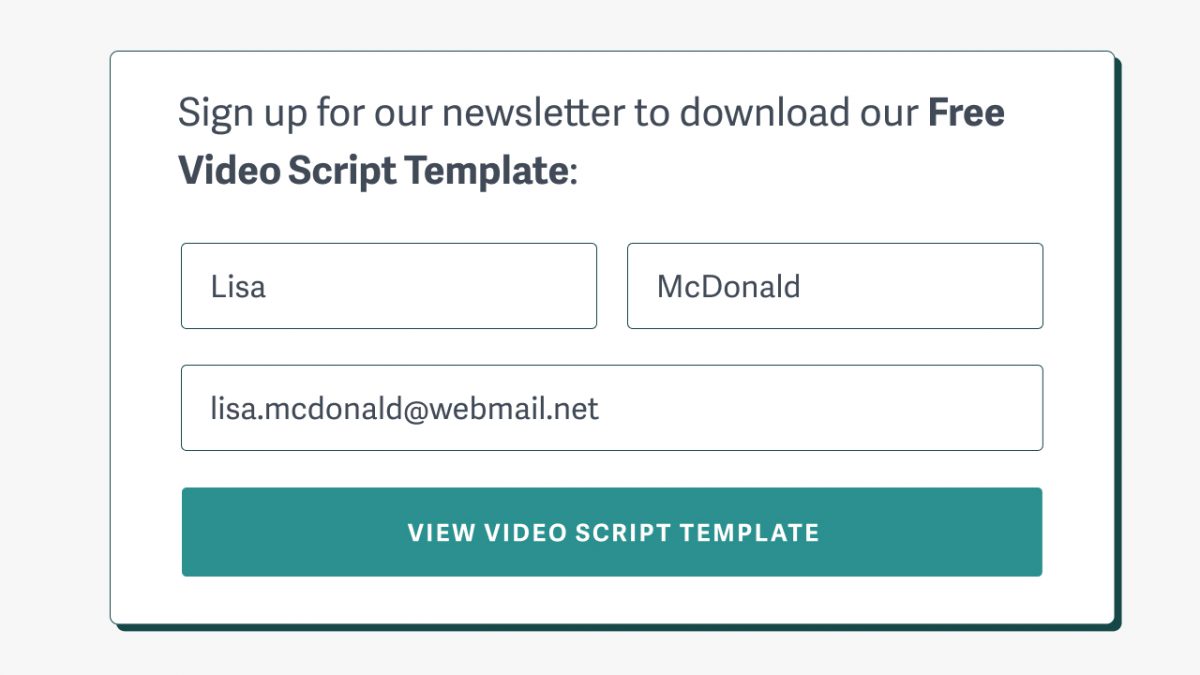
Place a sign-up form on the same page as your video or link to one from the video itself. You can integrate this approach into any website as a simple and effective way to capture leads.
Embedded sign-up forms are often preferred because they encourage opt-in without disrupting the video experience. Embed forms promote newsletter subscriptions, free trial sign-ups, downloadable resources, and more.
- Works Best For: Passive lead generation, directing traffic from social media, website or blog content, and most other scenarios.
- How To Implement: Most email marketing platforms and website builders provide contact forms and allow platform integrations for easy lead capture.
Gated Video Lead Capture
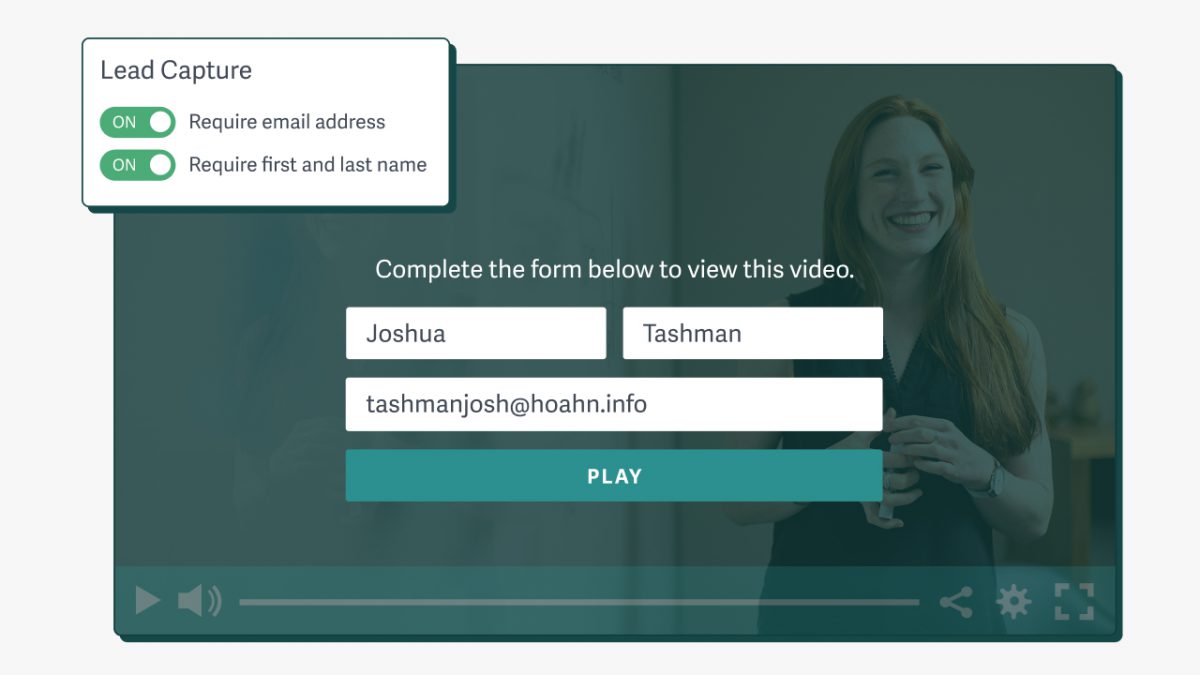
The perceived value of gated content must outweigh the friction of sharing personal details; otherwise, potential leads will bounce and never complete the form. In the expert example below, Garcia recommends providing value in the first video and gating the rest. This approach can be accomplished with an auto-advancing playlist and lead capture tool.
- Works Best For: Premium videos, like webinars, white papers, and mini-classes.
- How To Implement: Choose a private video host with lead capture tools.
In-Player CTA During Video
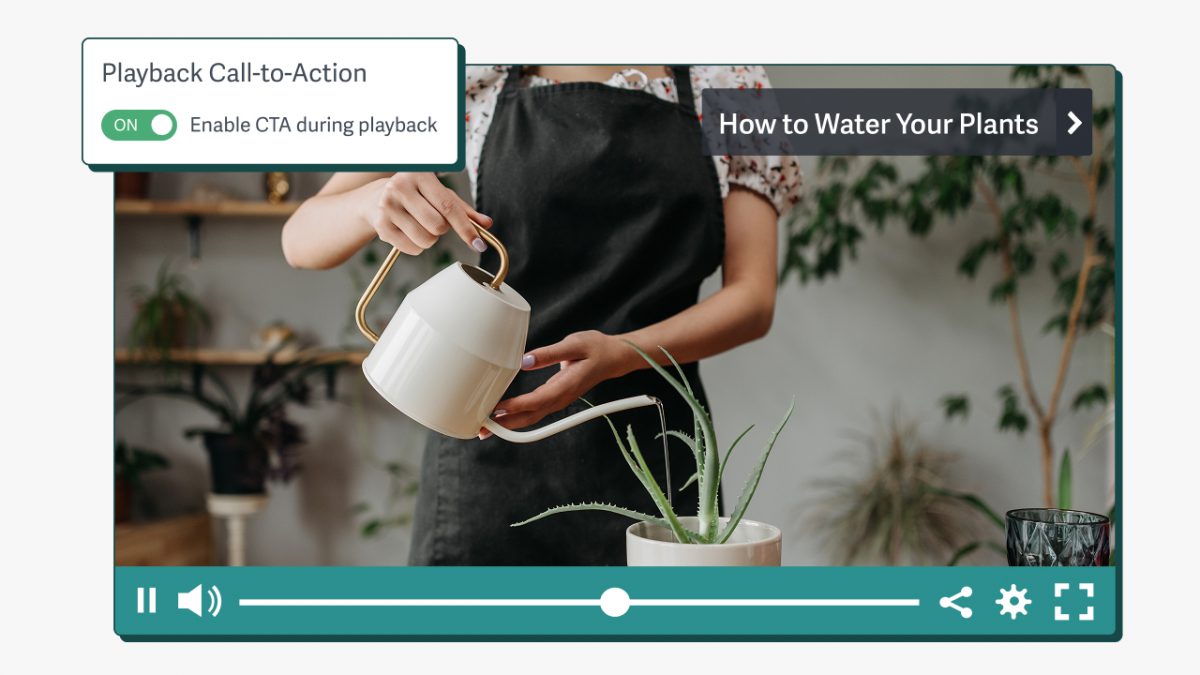
Entice viewer action during the most watched moment of your video or promote your lead magnet at the most relevant point with in-player CTAs. You can push viewers to gated resources, linked sign-up forms, discounted offers, or anything else.
- Works Best For: Leveraging peak moments of interest for immediate action.
- How To Implement: Use in-player CTAs through a private video host and when available on social media (i.e. YouTube)
Post-Play Screen CTA
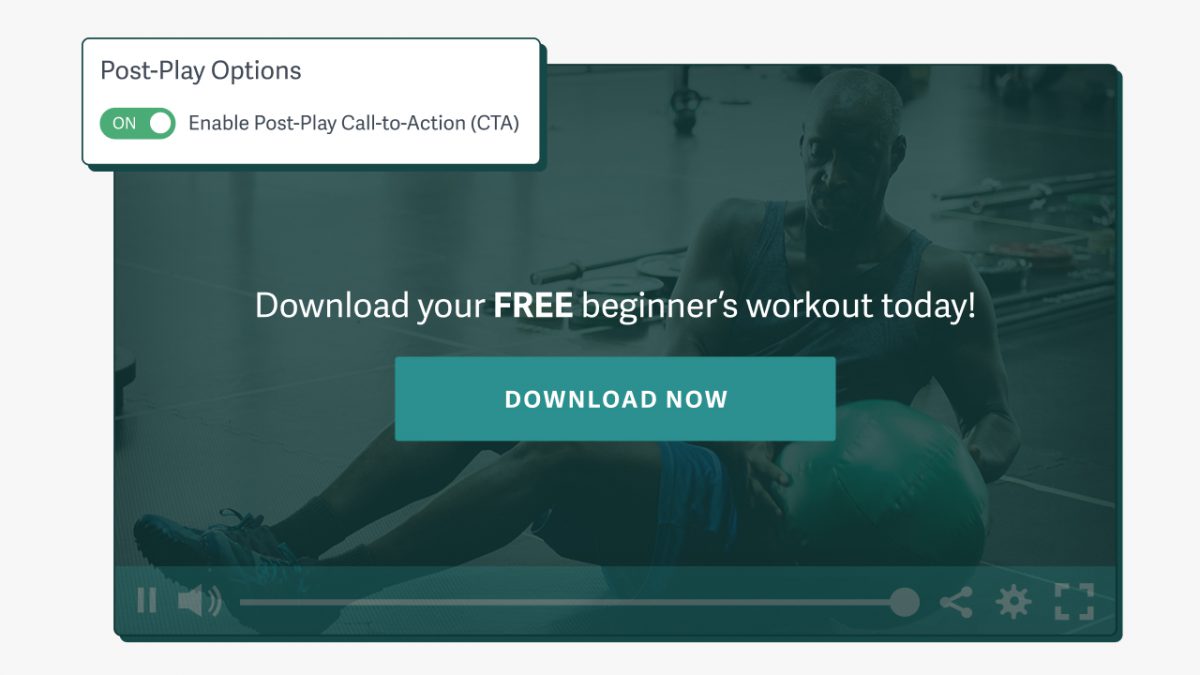
When a video finishes playing, display a post-play screen with a call-to-action such as a link, text, or sign-up form. This method works because you’re targeting the viewers who watched your video to the end. It encourages action by following up directly after the video concludes.
- Works Best For: Encouraging engaged viewers to take action by extending value.
- How To Implement: Choose a private video host that offers custom post-play screens.
Next Steps: Convert Leads & Retain Customers with Video
Once you’ve captured a lead, how do you convert them? Continue learning with our article on enhancing your sales funnel with video, or check out related resources below:



